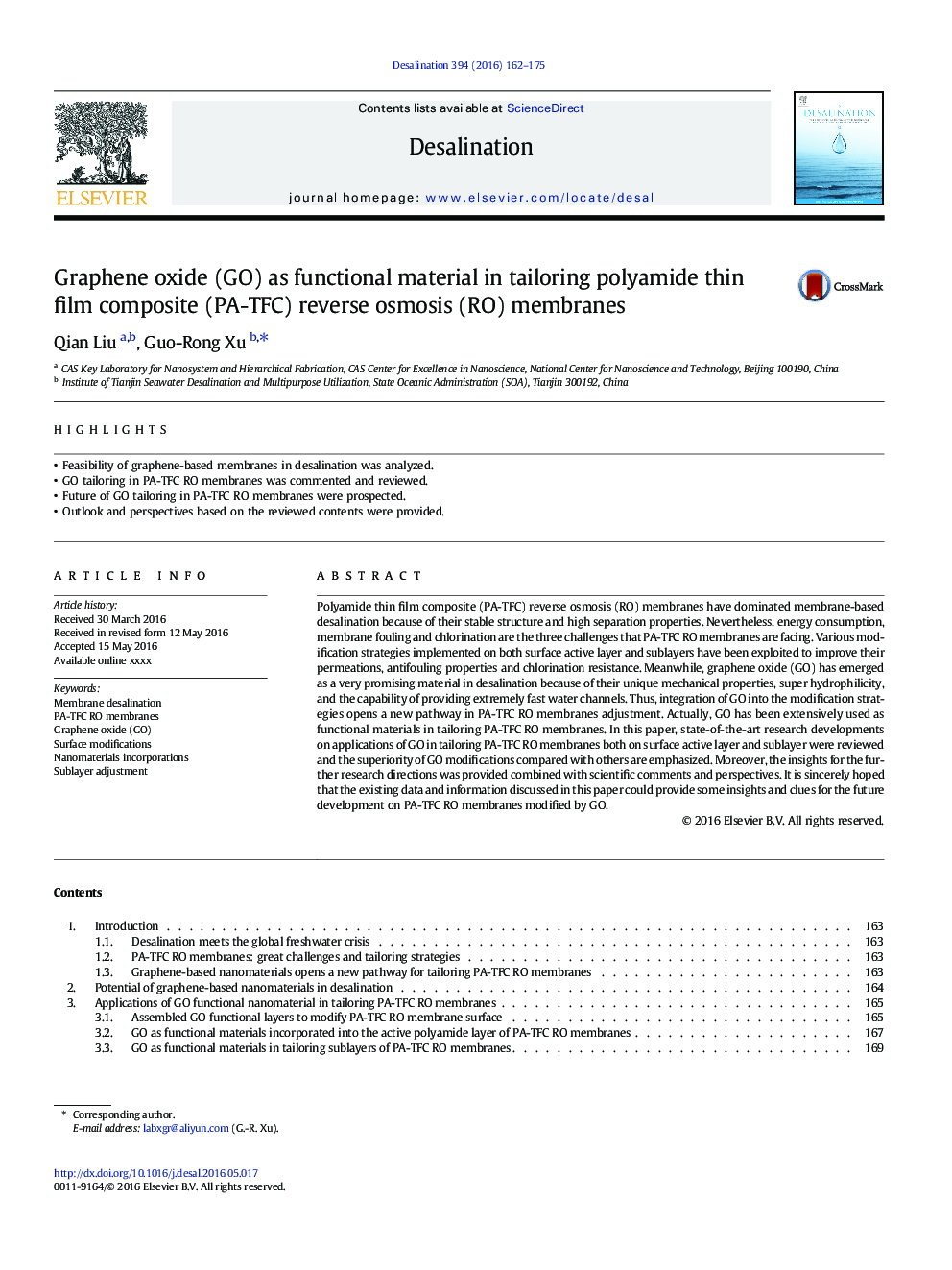| Article ID | Journal | Published Year | Pages | File Type |
|---|---|---|---|---|
| 622737 | Desalination | 2016 | 14 Pages |
Abstract
Polyamide thin film composite (PA-TFC) reverse osmosis (RO) membranes have dominated membrane-based desalination because of their stable structure and high separation properties. Nevertheless, energy consumption, membrane fouling and chlorination are the three challenges that PA-TFC RO membranes are facing. Various modification strategies implemented on both surface active layer and sublayers have been exploited to improve their permeations, antifouling properties and chlorination resistance. Meanwhile, graphene oxide (GO) has emerged as a very promising material in desalination because of their unique mechanical properties, super hydrophilicity, and the capability of providing extremely fast water channels. Thus, integration of GO into the modification strategies opens a new pathway in PA-TFC RO membranes adjustment. Actually, GO has been extensively used as functional materials in tailoring PA-TFC RO membranes. In this paper, state-of-the-art research developments on applications of GO in tailoring PA-TFC RO membranes both on surface active layer and sublayer were reviewed and the superiority of GO modifications compared with others are emphasized. Moreover, the insights for the further research directions was provided combined with scientific comments and perspectives. It is sincerely hoped that the existing data and information discussed in this paper could provide some insights and clues for the future development on PA-TFC RO membranes modified by GO.
Related Topics
Physical Sciences and Engineering
Chemical Engineering
Filtration and Separation
Authors
Qian Liu, Guo-Rong Xu,
